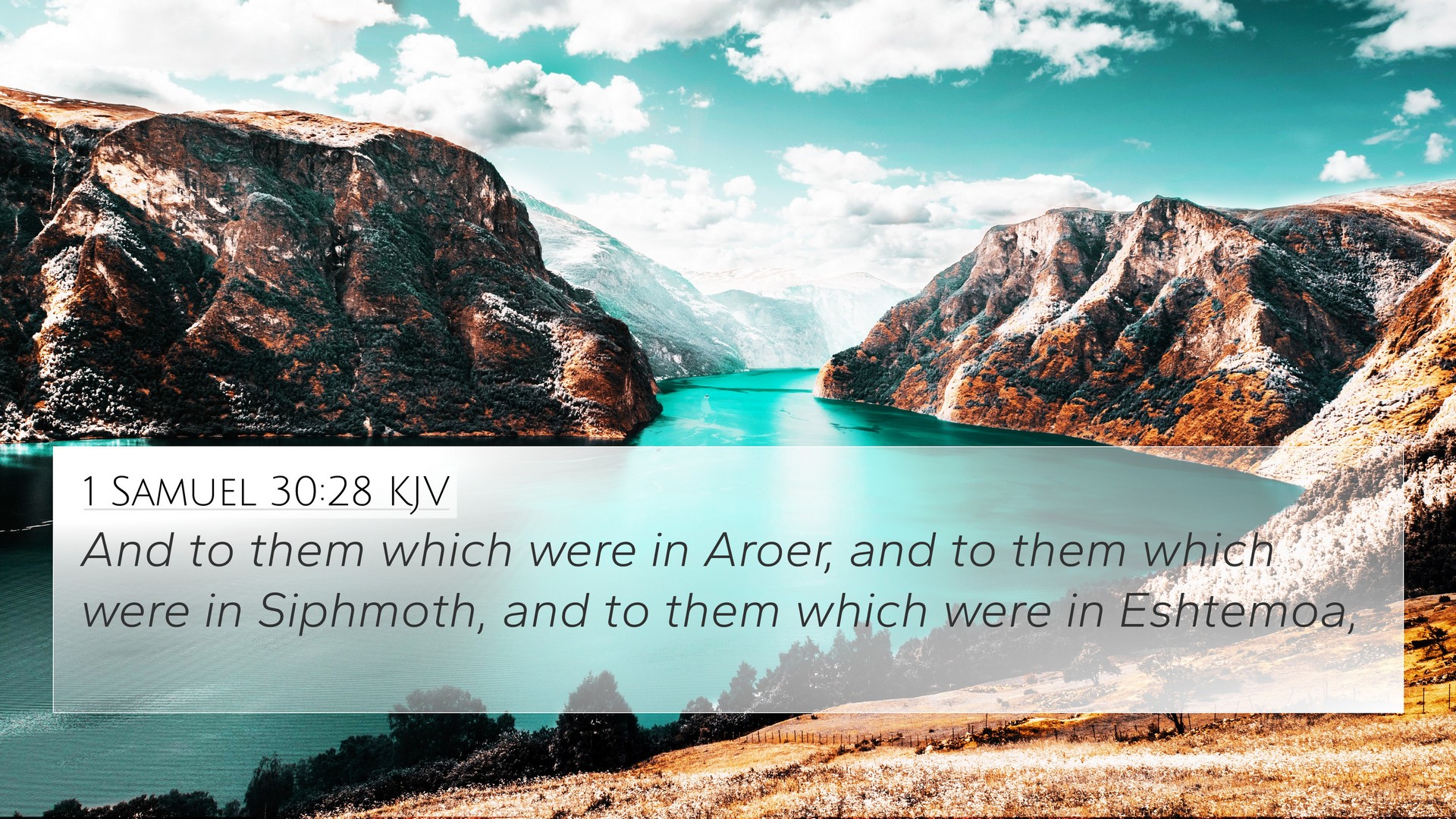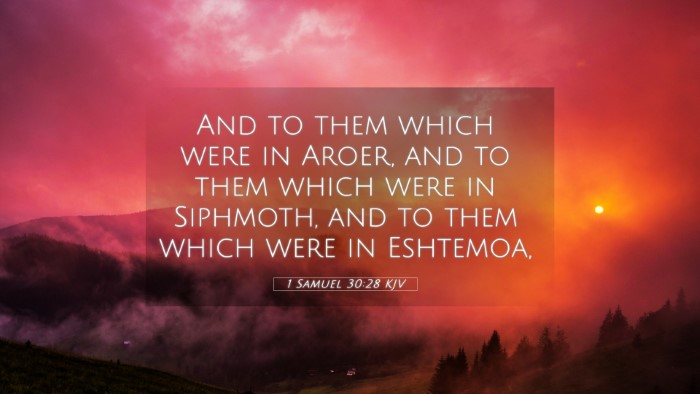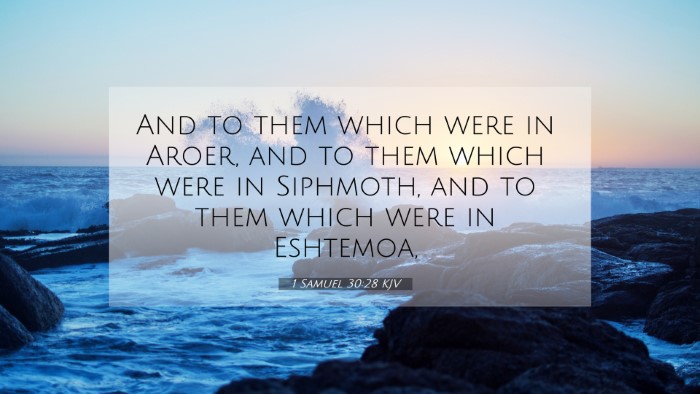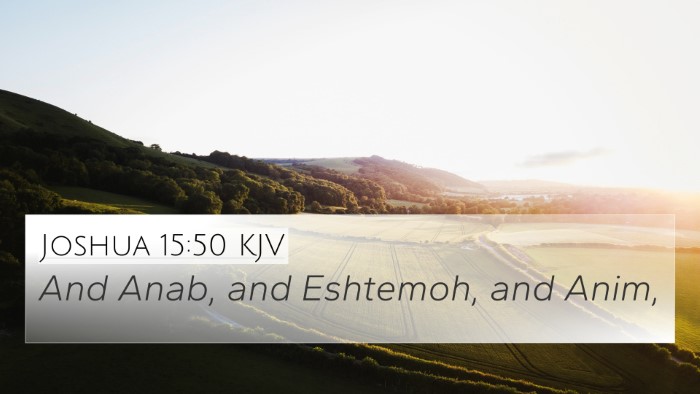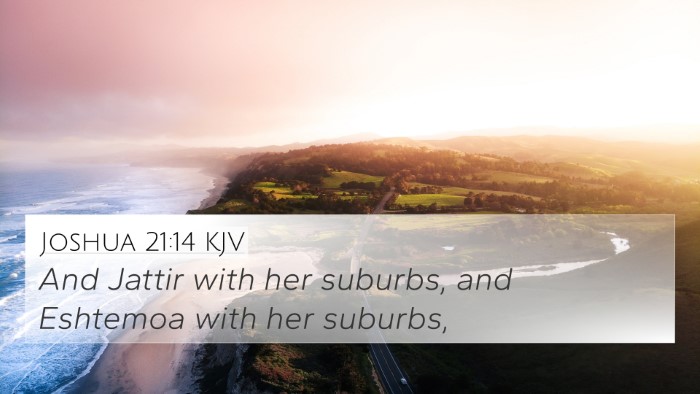Understanding 1 Samuel 30:28
1 Samuel 30:28 states: "And to them which were in Aijalon, and to them which were in Hebron, and to all the places where David himself and his men were wont to haunt."
This verse can be examined through various public domain commentaries which provide insights into its context, meaning, and relation to other biblical texts. Here we combine thoughts from notable commentators like Matthew Henry, Albert Barnes, and Adam Clarke.
Contextual Analysis
This verse is found in a chapter where David responds to a crisis after the Amalekites attacked his camp, capturing his wives and the families of his men. David's leadership and his reliance on God are notable here, illustrating the themes of divine justice and restoration.
Commentaries on 1 Samuel 30:28
- Matthew Henry: Henry highlights the importance of David's message to the cities of Aijalon and Hebron, indicating that the recovery of the spoils and the preservation of life were monumental acts of divine favor. He notes the community's involvement and how David had established a presence in these regions.
- Albert Barnes: Barnes discusses the significance of these regions in relation to David’s eventual kingship. He points out that this act of sending spoils shows David’s awareness of the people who supported him during his time of trial, emphasizing themes of loyalty and community among his supporters.
- Adam Clarke: Clarke places emphasis on the geographical spread of David's influence, suggesting that the mention of specific locations indicates David's rising power and the alliances he was forming. He reflects on the idea of sharing bounty as a means of solidifying support among the various tribes of Israel.
Biblical Cross-References
Several Bible verses relate closely to the themes and events depicted in 1 Samuel 30:28. They can deepen our understanding through Bible verse cross-references. Here are notable connections:
- 1 Samuel 30:1-2: The initial attack by the Amalekites and the distress it caused David and his men.
- 1 Samuel 30:6: David's strengthening of himself in the Lord, highlighting the necessity of faith during crises.
- 1 Samuel 30:19: Acknowledgment of the spoils recovered, showing God’s faithfulness in restoration.
- 1 Chronicles 12:1-22: Describes the support David received from various tribes and the context of his leadership.
- Psalm 22:22: David's pledge in the Psalms reflects his commitment to praise God publicly for deliverance.
- 2 Samuel 2:3: David's rise as king in Hebron shows the fulfillment of God's promises to him.
- Luke 19:10: The theme of recovery and salvation is mirrored in the New Testament, where Jesus came to seek the lost.
Thematic Connections
The passage shares significant themes with many Bible verses that relate to each other. Such connections reveal:
- God’s Faithfulness: The restoration after despair demonstrates that God is true to His word, evident in verses like Isaiah 41:10 and Romans 8:28.
- Leadership and Community: David's decisions reflect a larger picture of God-given leadership, explored in Proverbs 11:14 and 1 Peter 5:2-3.
- Provision after Trials: Just as David retrieves his family, the theme of divine providence emerges in verses such as Philippians 4:19.
How to Use Bible Cross-References
Studying cross-referencing Biblical texts is essential for deepening one’s comprehension of scripture. Here are some tools and methods suggested in the commentaries:
- Consult a Bible concordance or Bible cross-reference guide to find related verses.
- Utilize different translations of the Bible to gain a broader perspective on specific passages.
- Engage in cross-reference Bible study sessions to draw parallels between the Old and New Testaments.
- Look for thematic studies, such as the significance of community support in both Old Testament narratives and the New Testament church.
Conclusion
1 Samuel 30:28 encapsulates a pivotal moment in David’s life, illustrating themes of recovery and community. The insights from established commentators like Matthew Henry, Albert Barnes, and Adam Clarke provide a multi-faceted understanding that is enriched through thorough Bible verse cross-referencing.
By exploring connections between Bible verses, believers can deepen their spiritual insights, ensuring a well-rounded understanding of scripture that transcends mere reading. This method affirms the inter-Biblical dialogue, illustrating the unity and purpose woven throughout God’s Word.
